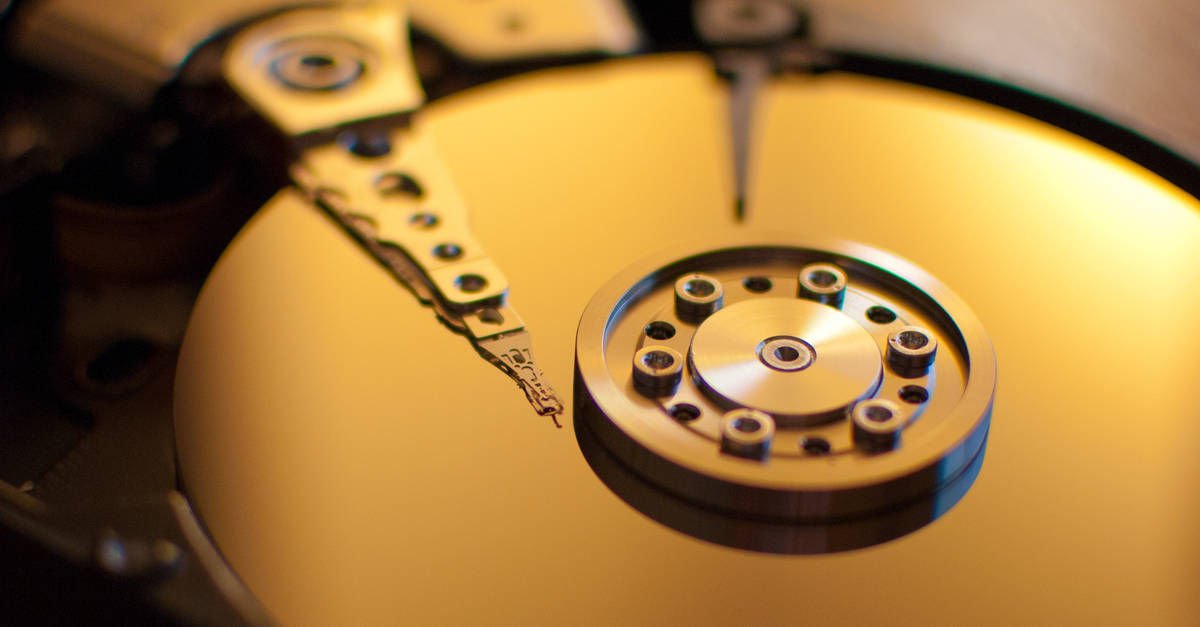What’s the outlook for enterprise hard disk drives (HDD) in the data center?
Does the continued decline of shipped units mean that the end is nigh for hard disk drives? Are solid state drives (SSD), fueled by long-term declines in NAND flash prices, on track to eclipse enterprise HDD as the dominant storage technology?
Hold your horses. Despite advances in flash and economic turbulence which has rattled the tech industry, reports of the demise of the hard disk drive may be overblown. Most data still resides on spinning platters, and the dawn of HAMR drives promises to ramp up areal density. For the foreseeable future, enterprise HDD will have a continued role storing data cheaply at scale.
Hard Times for Hard Drives?
Before talking long term predictions, let’s look at short term trends. There’s no getting around it: recent trends have been rough for HDD manufacturers.
According to Trendfocus, the number of shipped hard drive units dipped 20.2% y-o-y in 2Q2023. Unlike last year’s drop, this wasn’t primarily primarily due to reduced demand for consumer HDD. This time, it was nearline sales which were hit worst. The second quarter saw a stunning 45% drop in 3.5” high cap nearline drives shipped. By comparison, non-nearline drives saw a 17% y-o-y decline.
It remains to be seen whether HDD shipments (in exabytes at least, if not units) begin to creep back upwards. Either way, if flash is to supplant HDD in data centers, a lot rides on pricing. Pure Storage has recently argued forcefully that an SSD/HDD TCO price crossover is closer than you’d think.
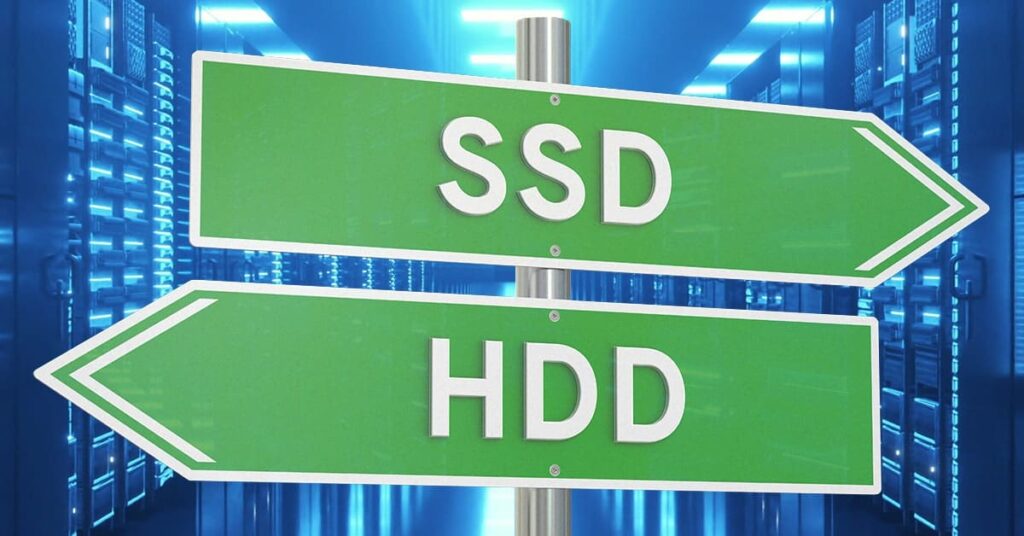
Related Reading
Check out our breakdown of the arguments by Pure Storage and others that SSD and HDD will experience a TCO crossover in the near future.
However, SSD still has a way to go to bridge the price gap with HDD, especially where high-cap drives are concerned. With lower demand contributing to an overall tech crunch, Pure’s pricing argument remains, for the time being, an educated guess. At least for now, research by Trendfocus shows that the vast majority of the 258.87 EB of enterprise data shipped in 2Q2023 still resides on spinning media.
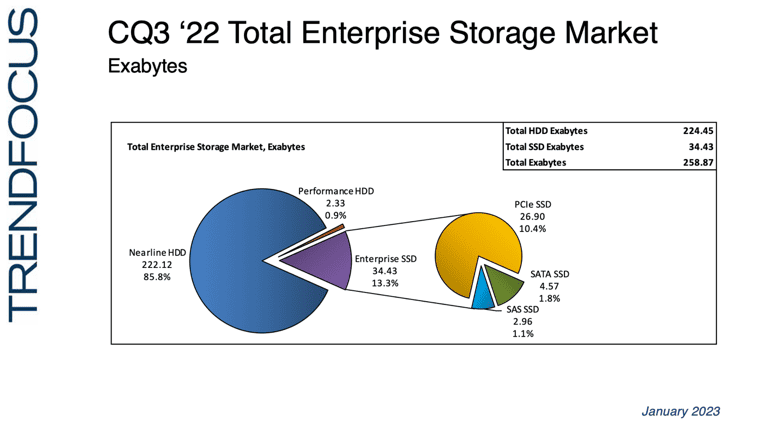
Finally, manufacturing capacity is also a consideration. Pure Storage R&D VP Shawn Rosemarin argues there will be no more HDD sales after 2028. But Chris Mellor at Blocks & Files estimates that even given advances in flash capacity, NAND production in 2029 will fall about 405EB short of what would be needed to replace HDD capacity.
The Relentless Rise of Data Storage
While tech trends are hard to predict, there’s a helpful rule of thumb: keep things in perspective. True, HDD unit shipments are down. But SSDs have also seen a short-term dip, and this has hardly resulted in panic amongst manufacturers. And for good reason: data is being generated faster than ever, and attempts to monetize it will drive demand for storage in the long-term.
Unit shipments are a poor guide to exabyte trends, since drive capacity is always increasing. While HDD unit shipments peaked in 2010, HDD shipped capacity increased by approximately 67.5% between 2018 (912 shipped exabytes) and 2021 (1.35 shipped zetabytes). While HDD capacity shipments were also down in the first half of this year, it’s too soon to call it a long-term trend.
The numbers are revealing. The global installed base of storage capacity is expected to hit 13.2ZB in 2024, almost double the capacity in 2020. But by 2025, there may be more than 175 zettabytes of data generated, vastly outstripping our ability to store it. This jump is partly due to the explosive growth of the internet of things, which is on track to triple from 2020 to 2030. By 2030, there will be more than 29 billion phones, tablets, and smart appliances generating data.
Returning our focus to enterprise business, while flash storage will make up a growing slice of the pie, a recent study by Trendfocus suggests that for some time yet, the vast majority of data will live on hard drives.

No surprise then that the major hard drive manufacturers—Seagate, Western Digital, and Toshiba—are doubling down on their HDD product road maps. The prospect of relentless data growth clearly supports their confidence.
“Enterprise organizations are expected to begin to realize more value from the unstructured data they generate, capture, and store as new data intelligence solutions including generative AI are adopted.”
John Rydning, Research VP, Global DataSphere at IDC.
New HDD Technologies
There remain good grounds for the three main hard drive makers to feel confident about the medium-to long-term outlook for HDD.
HDD manufacturers have been squeezing in extra 2TB platters and widely promoting SMR technology (shingled magnetic recording) for data center drives. However, they are also looking to up the ante on areal density with the use of heat-assisted magnetic recording (HAMR)
Beginning with a 10 disk, 32TB drive, Seagate plans to move to 36TB and 40TB drives, each with greater areal density than the last. The firm also experimented with 5TB disks in the lab. While no firm dates were given, Seagate CFO Gianluca Romano expects that there will be a gap of 18-20 months between HAMR capacity increases.
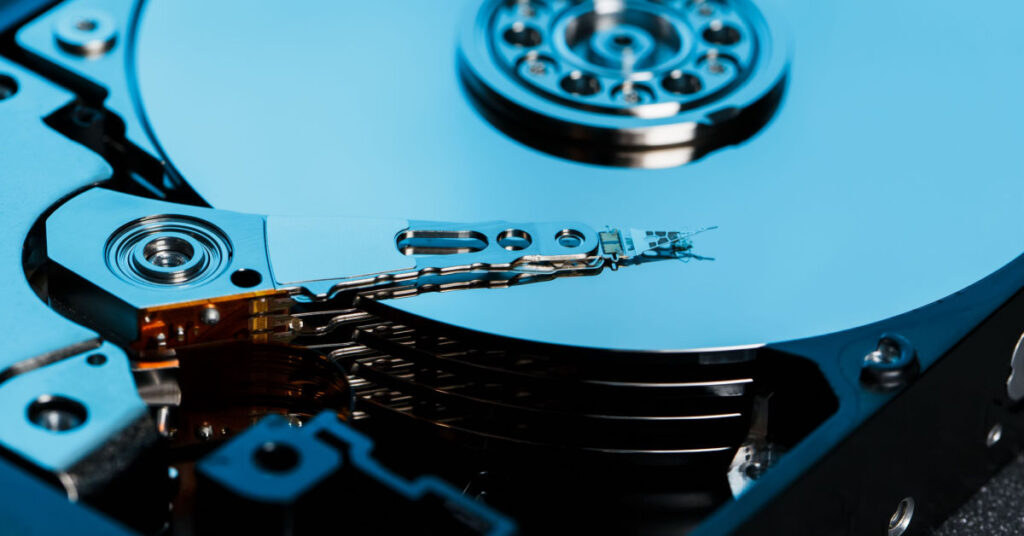
Related Reading
The big three HDD manufacturers are developing innovative tech that lets them pack in the terabytes. Who will be the first to make a 50TB drive?
In fact, Seagate claims that after releasing a 24TB and a 28TB drive, it will be done making PMR drives.
“HAMR is growing very well. It’s growing actually a little bit faster than what we were expecting just a few months ago. So we are starting to ship already last quarter and this quarter for qualification. Usually, qual takes a certain number of months… Probably you will see a good volume from HAMR that can start to impact our P&L, I would say, in three to four quarters from now.”
Gianluca Romano, CFO at Seagate, at the Bank of America GTC conference.
These Seagate drives will also utilize dual actuator technology, which is designed to unlock additional IOPS for improved read/write performance.
Western Digital has also been going the HAMR route. CFO Wissam Jabre said the firm was around 12 to 18+ months away from volume production of HAMR drives. These drives may also utilize WD’s innovative OptiNand technology, which augments HDDs with a small flash controller that stores metadata.
While the technical approaches may vary, what appears certain is that HDD is poised for significant capacity growth in the years ahead.
HDD vs SSD
None of this technological development reflects poorly on solid state drives—the opposite in fact.
SSD adoption will keep growing as a proportion of the overall pie. Meanwhile, SSD and HDD pricing will carry on falling in the long term.
Advances in the NVMe protocol and a growing appetite for composable architectures built around flash will further upend the established order. Along with the rise of storage-class memory, these factors will lessen the focus on data center HDD.
Indeed, flash is already the default choice for storage outside of the data center. HDD makers have long since recognized the inevitability of the notebook entirely transitioning to SSD, remarks Stephen Buckler, chief operating officer at Horizon Technology.
However, this does not spell the end of the hard drive, Buckler insists. “Increasingly storage is all about the cloud. As AI and big data ever more play a role in our day-to-day lives, this increases the need for cheap storage. Storage leaders such as Seagate and Western Digital continue to invest in improvements to hard disk technology, signaling that the game is far from up for HDD.”
Cloud Storage Holds Strong
Speaking of the cloud, cloud storage as measured by spending is still going strong.
Gartner estimates that in 2023, end-user cloud spending will increase 21.7% year-over-year to $597.3 billion. This is reinforced by an IDC report which says that public cloud spending will continue to outpace private cloud spending until at least 2027, when it will account for 69% of total storage infrastructure and compute spend. That spending means a lot of exabytes, the lion’s share of which will be on spinning platters.
Again, it’s not an either-or situation when it comes to storage technologies. Tape serves as a good analogy here. It remains unlikely that HDD will develop into a credible threat to tape as a medium for cold storage in the hyperscale data center. Just as tape still has its place in the storage mix, enterprise HDD may retain its place in the cloud as the data storage workhorse.
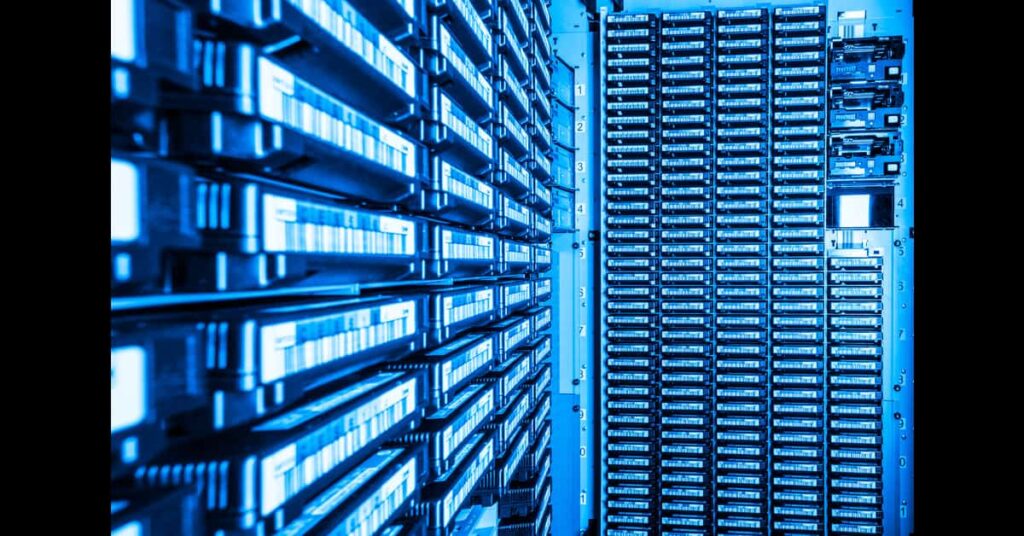
Related Reading
Not only does tape hold a clear price advantage over HDD for archival storage, but tape capacity continues to grow. And data transfer rates associated with the technology remain attractive.
Catch a Rising Tide
The future storage mix is always tricky to predict, as unexpected innovations can lead to rapid change. But given the current state of play and the dominance of HDD as a share of enterprise data storage, it seems pretty clear HDD technology has life in it yet. The real test will be HAMR drives: as areal density increases, will the resultant cost savings keep customers coming back?
At the same time, flash continues to strengthen across storage use cases, and will grow as a proportion of an expanding pie. In a world of diverse storage use cases, analysts would do well not to overemphasize the conflict between HDD and SSD. After all, the surge in data generated means there will be a massive amount to store and process, suggesting an all-hands-on-deck scenario where multiple varieties of storage work in tandem. A rising tide lifts all boats, as they say.
Whether you’re buying or disposing of data storage capacity, learn more about how Horizon Technology leverages its deep industry expertise to support your enterprise hard drive needs.






